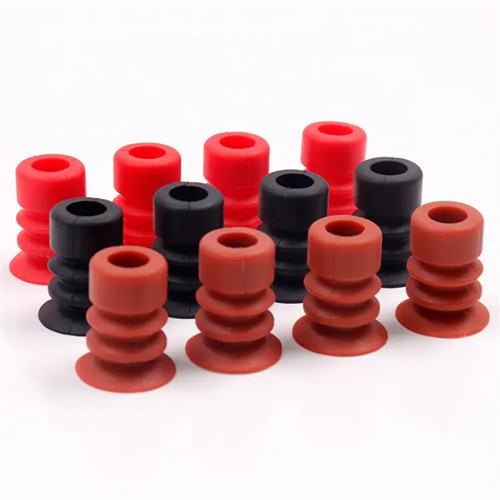Modification and properties of plastics
Plastic modification is a technique that changes the structure and composition of polymers through physical, chemical, or mechanical means to improve their mechanical, thermal, and processing properties, thereby expanding their application range. Unmodified general-purpose plastics (such as PE and PP) have limited performance and are difficult to meet the requirements of complex working conditions (such as high temperatures, high loads, and chemical corrosion resistance). However, modified plastics can achieve a significant performance boost: for example, PP is reinforced with glass fiber, increasing its tensile strength from 30MPa to 80MPa; PVC is modified through plasticization, reducing its hardness from Shore D80 to Shore A60, achieving a transition from a hard product to a soft product. Modification technology has become a core driving force for the development of the plastics industry. According to statistics, the global market size of modified plastics accounts for over 30% of the entire plastics market, and is widely used in the automotive, electronics, and medical fields.

Physical modification is the most commonly used method for plastic modification. It achieves performance control by adding fillers, toughening agents, and reinforcements, offering simple processes and low costs. Filling modification involves adding inorganic fillers (such as calcium carbonate and talc) to plastics, reducing costs and improving rigidity. For example, adding 30% talc to PP increases the flexural modulus from 1500 MPa to 2500 MPa, but the impact strength may decrease by 10-20%. Reinforcement modification uses fibrous materials such as glass fiber and carbon fiber as reinforcements, significantly improving strength and heat resistance. For example, adding 30% glass fiber to PA66 increases the tensile strength from 80 MPa to 150 MPa and the heat deflection temperature from 70°C to 220°C. Toughening modification improves impact strength by adding elastomers (such as EPDM and POE). For example, adding 10% EPDM to PS increases the notched impact strength from 2 kJ/m² to 15 kJ/m², achieving a transition from brittle to tough. For example, the special material for automobile bumpers is modified through a composite of “PP+20% EPDM+10% talcum powder”, which not only maintains rigidity but also has excellent impact resistance, meeting the low-temperature impact requirements of -40°C.

Chemical modification improves performance by changing the molecular structure of polymers, including copolymerization, cross-linking, grafting, etc., and the modification effect is more durable and stable. Copolymerization is the co-polymerization of two or more monomers. For example, ABS resin is a copolymer of acrylonitrile, butadiene, and styrene, which combines the chemical resistance of acrylonitrile, the toughness of butadiene, and the processability of styrene. Cross-linking is the formation of a three-dimensional network structure of linear molecular chains through chemical or physical methods. For example, after PE is cross-linked by peroxide, the heat resistance temperature is increased from 60°C to above 100°C, and the solvent resistance is significantly improved. It is often used in hot water pipes. Grafting modification is the introduction of functional groups on the main chain of the polymer. For example, after PP is grafted with maleic anhydride, its compatibility with glass fiber is enhanced, and the strength of the composite material is increased by 20%. For example, by introducing ultraviolet absorbing groups into the molecular chain, the outdoor service life of weather-resistant PP is extended from 1 year to more than 5 years.

Functional modification imparts special properties to plastics, such as flame retardancy, electrical conductivity, thermal conductivity, and antibacterial properties, to meet specific application requirements. Flame retardant modification achieves UL94 V0 flame retardancy by adding flame retardants (such as bromine-based and phosphorus-based materials). For example, adding 15% decabromodiphenyl ether to ABS achieves a self-extinguishing time of ≤ 10 seconds, making it suitable for electronic housings. Conductive modification reduces the volume resistivity of plastics from 10⁴Ω・cm to below 10³Ω・cm by adding conductive fillers (such as carbon black and metal powder). This is used in antistatic trays and electromagnetic shielding components. Antimicrobial modification, by adding antimicrobial agents such as silver ions and zinc oxide, achieves ≥ 99% inhibition against Escherichia coli and Staphylococcus aureus and is used in medical devices and food packaging. For example, antimicrobial PE plastic wrap, by adding 0.5 % nano-zinc oxide, extends its shelf life by 3-5 days without any toxic residue.

The development trend of plastic modification is moving toward high performance, multifunctionality, and environmental friendliness. In terms of high performance, ultra-tough and ultra-high-strength modified materials (such as carbon fiber-reinforced PEEK with a tensile strength ≥ 200 MPa) are being developed to meet the demands of high-end applications such as aerospace. Composite modification combines multiple modification technologies, such as integrated “reinforcement + toughening + flame retardancy” modification, to achieve materials with high strength, high toughness, and flame retardancy, such as those used in automotive engine peripheral components. Environmental friendliness emphasizes the use of bio-based raw materials (such as starch and plant fibers) and biodegradable additives to develop fully biodegradable modified plastics. For example, PBAT/PLA blends are fully degradable in the natural environment within six months, replacing traditional plastic bags. For example, a company developed a “glass fiber reinforced + plant fiber filled” modified PP that not only achieves a strength of 100 MPa but also has a 30% biobased content, reducing its carbon footprint by 25%, meeting EU environmental regulations.
